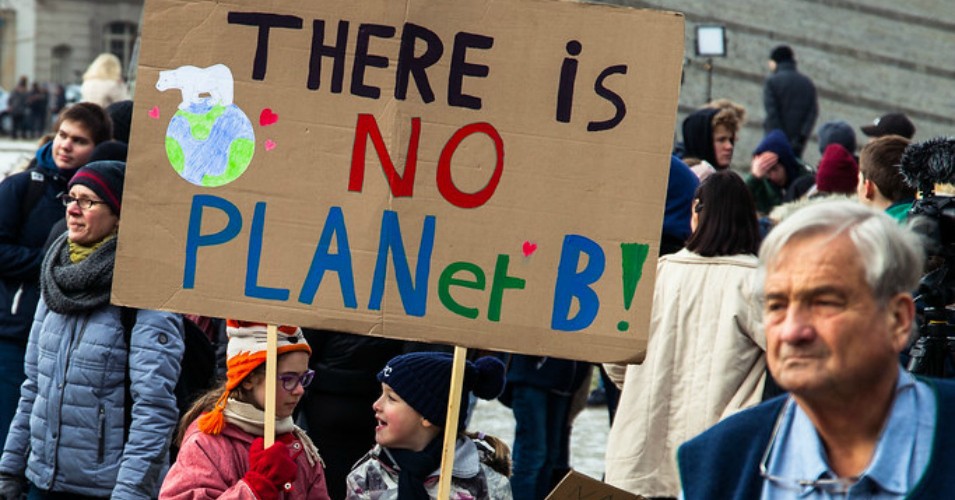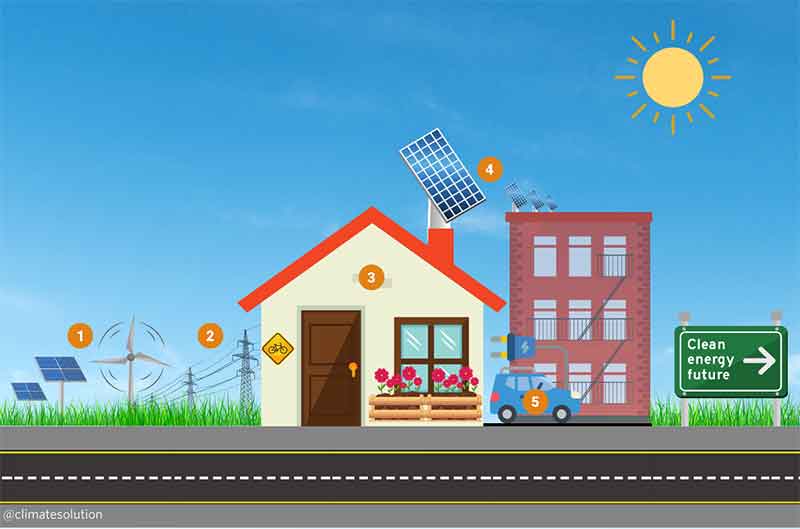
The climate crisis question today has turned into the question of exploitation and justice – exploitation by a few, and justice for the entire humanity.
The recently released Oxfam report – Carbon billionaires, The investment emissions of the world’s richest people (Nov. 22, 2022, https://oxfamilibrary.openrepository.com/bitstream/handle/10546/621446/bn-carbon-billlionaires-071122-en.pdf?sequence=14) – says a lot about this reality of exploitation by a few rich, and of the rest of the humanity. The first group is the exploiters while the other is the exploited.
The study by Oxfam and the Stockholm Environment Institute (SEI) calculates the annual carbon footprint of the investments of just 125 of the world’s richest billionaires. The study findings include:
# The investments of 125 of the world’s richest individuals have a carbon footprint equivalent to the emissions of the entire population of France – 67 million. This represents an average of 3.1 million tonnes per billionaire, which is over one million times higher than 2.76 tonnes, the average for someone in the bottom 90% of humanity.
# Very rich people emit huge and unsustainable amounts of carbon and have an outsized influence over our economy.
# Fifty percent to 70% of the emissions of the world’s richest people is the result of their investments.
# An average 14% of the investments owned by the billionaires was in “polluting industries” including fossil fuel and cement.
# The richest 1% alone were responsible for 15% of cumulative emissions, and they were emitting 35 times the level of CO2e compatible with the 1.5°C by 2030 goal of the Paris Agreement.
# In 2018, emissions from the private yachts, planes, helicopters and mansions of 20 billionaires generated on average about 8,194 tonnes of carbon dioxide (CO2). Contrarily, any individual among the poorest one billion people emits around 1.4 tonnes of CO2 each year.
# For every million dollars invested by the billionaires covered in the study, 162.34 tonnes of CO2e are emitted each year.
# The billionaires covered in the study found 393m tonnes of CO2 per year, and the average emissions for each billionaire’s investment were 3m tonnes of CO2. On the opposite, the average UK pension pot funds 23 tonnes of CO2.
# In a matter of just minutes, billionaires are emitting more CO2 than most people emit in a year.
# Billionaires’ investments in 183 corporations added up to $2.4 trillion, which are responsible for emitting 3 million metric tonnes of CO2 each year, exceeding the average emissions of an individual who does not make up the wealthiest 10% by a million times.
The Oxfam report tells about a few billionaires’ lifestyle – a huge carbon footprint. It’s actually a revelation of a system, which is owned by the few super-rich; of a system, which exploits billions; of a system that distributes unequally; of a system that lives on exploiting the nature and labor, and denies justice for the exploited; of a system that is concerned only about self – investment of capital, regeneration of capital, and profit. Otherwise, it wouldn’t have been possible for the few rich to pilfer and squander the nature, carry on their business of creating climate crisis.
Today, other than a few deniers in the payroll of big capital none denies the climate crisis. But, the much powerful capital creating the crisis is indifferent to the question of this crisis that haunts the entire planet.
The Washington Post’s two recent headlines said:
And,
“As climate change worsens, Egypt is begging families to have fewer kids”.
On the one camp, there’re more than 100 countries; and that’s millions of people. They demand nothing, but justice. But, justice is yet to be delivered.
And,
A country in the South prefers not to have its future citizens. Is it a crude form of elimination of human race?
Reports of lives of peoples in communities’/countries threatened by the climate crisis are many today. These are coming from around the world – from the Caribbean to the Pacific, from Africa, from the Middle East to Bangladesh and Bolivia, from the continental US, from the Himalayas to the Alps and the Andes, from cities like London and New York, from the grape vines fields in France and Italy, from tomato fields in the US. The crisis is all encompassing.
From the US, reports related to the crisis are alarming as much of its regions are in no less dangerous situation than the low-lying coastline and islands in the southern part of Bangladesh:
# “Climate change will cause more frequent and intense storms, causing increased flooding” in the Southeastern US, the country’s Environmental Protection Agency states on its website.
# In the Mississippi River Delta, equivalent of a football field of wetlands disappears every hour — 16 square miles every year for the last 25 years — according to a 2021 study by the United States Geological Survey.
# A 2021 study published in Geophysical Research Letters found states like Louisiana, Mississippi and Florida will be twice as likely to experience consecutive tropical cyclones, which is fewer than 10 days between the cyclones, by the year 2100.
# In Louisiana, an island has shrunk – from 22,000 acres in 1955 to 320 acres – due to, among other reasons, coastal erosion and sea level rise.
# The US National Oceanic and Atmospheric Administration data show: sea levels in states like Florida have risen by an average of 8 inches since 1950, and it’s estimated to rise an additional 8 to 9 inches by 2050. In Tampa Bay, Fla., saltwater from the rising seas has already begun encroaching on groundwater.
# Large parts of the Southeast US including Virginia, North Carolina, South Carolina, Florida, Georgia, Alabama, Mississippi, Louisiana, Arkansas, Tennessee and Kentucky’s coastlines are vulnerable.
The UK faces loss of a long part of its shoreline. The cold-country will experience more heatwaves.
The World Bank predicts: The crisis could create approximately 216 million internally displaced people by 2050, and by 2030, “hot spots” of internal migration would emerge.
This internal migration will not only happen in Bangladesh. Countries like the US will also experience it.
The crisis is not only southern hemisphere-, poor countries-centric, therefore. It’ll be a stupid attitude to be indifferent to the crisis assuming it’s a crisis of only countries like Bangladesh.
At the early-stage of finding out the crisis, it was not even identified as crisis by many concerned. It was named Climate Change. Now, a very small quarter goes for the term “change”. The widespread, grave, threatening situation is now clear to most of the related quarters, and it’s identified as crisis.
At the initial stage of finding the crisis, it was mainly portrayed as a problem threatening a vast area of Bangladesh, and all of the Maldives, the Marshall Islands, Fiji and other island-countries in the Pacific. Scientists telling the related facts were not taken seriously at that time. Even, the scientists faced skepticism from many state and public leaders and policy makers.
But, gradually, the situation has changed. Now, no debate on the issue is required. The deniers’ false propaganda persists, however.
Why these happen?
Anyone can ask: What’s the source of the crisis?
Answer, overwhelmingly told, to the question goes like this: A huge emission of CO2.
The question that follows: Why so much CO2?
The answer goes: Fuel, hydrocarbon, technology.
As relief from the catastrophe, the suggestions include change technology, give up coal and hydrocarbon, capture CO2, reduce consumption.
But, attention of analysis misses source of the source mentioned.
Don’t these questions come up: Why hydrocarbon is used in such a way? Who spends this? Why a certain technology is used? Why those are not discarded? What’s that power that doesn’t care about the crisis harming billions?
A partial answer is the facts presented by the Oxfam- SEI study: The billionaires, the rich part of the world population; their private consumption – luxurious, unnecessary, squandering; and their investments.
The squandering lifestyle of the rich is not the primary and major cause, as that’s little in quantity and amount. In terms of ratio, or percentage, that’s huge, and as a trend that is suicidal for the entire humanity.
The main cause is in, what has been told, investment, which the Oxfam-SEI study shows with data from its sample.
That money is invested in a type of economy, to be specific, in a production process, which establishes a type of relations – exploitative. To have their squandering lifestyle, they need profit, and to have profit, they invest, and to invest, they regenerate capital, and regeneration of capital is not possible without exploitation. This part is the bigger portion, much bigger than the billionaires’ private consumption. This is the capitalist economy that drives the CO2 to higher and higher level endangering this globe with all forms of its life.
So, it’s found exploitation by a few. These few like to have a lot, like to have all the resources, like to have a life to squander at the cost of all; and they like to have the system act according to their interest, that pilfers other tax payers’ money, that uses tax payers’ money to subdue tax payers and make the tax payers obedient.
The relationship between the rich, the increasing CO2, the climate crisis, the poor, the exploitation, and inequality appears stark, thus.
But, this can’t move further. Condition of life on this planet demands this. Even, the capitals the rich have and invest, the way they profit is going to face threats by this crisis. How and how long can they profit if the labor and nature don’t survive?
The situation of stratospheric gains by a few at the cost of this planet demands justice; and that’s cancel the system that is unjustified – that’s the justice. It’s a radical change of the system.
And, it’s actum ne agas, do not do what is already done. Change radically, what’s already been done.
Till that justice is delivered, the interim period requires interim measures – money required to face the crisis be given to the victims – countries and peoples, to measures to face the crisis, and initiate changes in public policies to compel the crisis retreat.
Note: All referred parts are direct/indirect quotes from related documents, etc.
Farooque Chowdhury writes from Dhaka, Bangladesh.
















































